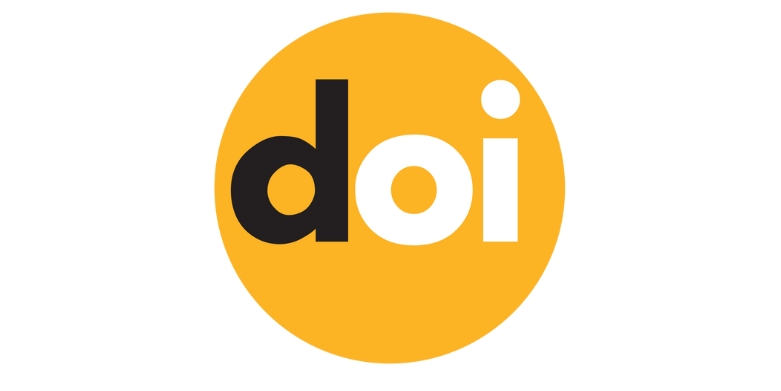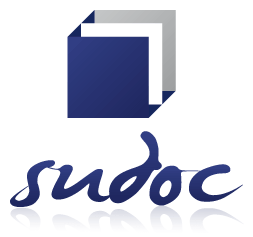Investigating the effect of astaxanthin on the survival rate of MCF-7 breast cancer cells by MTT method (cytotoxicity test)
DOI:
https://doi.org/10.63053/ijhes.63Abstract
Cancer is known as a very dangerous and incurable disease, with symptoms such as pain and disability. In recent years, changes in the way people live have increased the prevalence of breast cancer in different societies. This terrible disease has increased research in this field. Astaxanthin is one of the most famous natural carotenoids, which, due to its strong antioxidant activity, can prevent cardiovascular diseases, strengthen the body's immune system, and prevent cell ageing. In this study, the effect of astaxanthin on MCF-7 cancer cells was investigated. After culturing the cells in 96-well plates, they were treated with different concentrations of astaxanthin and then evaluated using the MTT method. The results showed that astaxanthin can inhibit cell growth and induce apoptosis, and this effect is enhanced by increasing the concentration of astaxanthin, so that at a concentration of 100 μM, the rate of apoptosis increased to 35%. Therefore, it can be concluded that astaxanthin may be used as a control treatment for cancer.
References
Mofid, Fatehizadeh, & Dorothy. (2017). The effectiveness of treatment based on acceptance and commitment on depression and quality of life of female criminals imprisoned in Isfahan city. Strategic Researches of Iran's Social Issues, 6(3), 17-30
Mohagheghi, Mohammad Ali and colleagues. 2017, demographic characteristics and survival analysis of breast cancer patients in Imam Khomeini Hospital complex. 10th Annual Seminar of Cancer Institute, University of Medical Sciences, Tehran, 25-23
Ataollahi MR, Sharifi J, Paknahad MR, Paknahad A. Breast Cancer and Associated Factors: A Review. J Med Life 2015; 8(Spec Iss 4): 6-11
Bernstein L. The epidemiology of breast cancer. Women Cancer 1998; 1S:7- 13.
Boussiba, S. Carotenogenesis in the green alga Haematococcus pluvialis: Cellular physiology and stress response. Physiol. Plant 2000, 108, 111–117.
Boyd NF, Byng JW, Jong RA, Fishell EK, Little LE, Miller AB, Lockwood GA, TritchlerDL, Yaffe MJ. Quantitative classification of mammographic densities and breast cancer risk: results from the Canadian National Breast Screening Study. J Natl CancerInst 1995; 87:670-5.
Brady DC, Graham SA. Prevalence of risk factors in breast cancer patients at the universityhospital of the westoindies. Medical Journal 2000; 49(2): 161-3.
Camera, E.; Mastrofrancesco, A.; Fabbri, C.; Daubrawa, F.; Picardo, M.; Sies, H.; Stahl, W. Astaxanthin, canthaxanthin and beta-carotene differently affect UVA-induced oxidative damage and expression of oxidative stress-responsive enzymes. Exp. Dermatol. 2009, 18, 222–231
Chew B.P.; Mathison, B.D.; Hayek, M.G.; Massimino, S.; Reinhart, G.A.; Park, J.S. Dietary astaxanthin enhances immune response in dogs. Vet. Immunol. Immunopathol. 2011, 140, 199–206
Davinelli, S.; Nielsen, M.E.; Scapagnini, G. Astaxanthin in Skin Health, Repair, and Disease: A Comprehensive Review. Nutrients 2018, 10, 522
DeSantis, C.E.; Ma, J.; Goding Sauer, A.; Newman, L.A.; Jemal, A. Breast cancer statistics, 2017, racial disparity in mortality by state. CA. Cancer J. Clin. 2017, 67, 439–448
Elidrissi Errahhali M, Elidrissi Errahhali M, Abda N, Bellaoui M. Exploring Geographic Variability in Cancer Prevalence in Eastern Morocco: A Retrospective Study over Eight Years. Plos One 2016; 11(3): e0151987.
Fassett, R.G.; Coombes, J.S. Astaxanthin, oxidative stress, inflammation and cardiovascular disease.Future Cardiol. 2009, 5, 333–342.
Ferlay J, Soerjomataram I, Dikshit R, et al. Cancer incidence and mortality worldwide: sources, methods and major patterns in GLOBOCAN 2012. Int J Cancer 2015; 136: E359–86.
Fredslund SO, Bonefeld-Jørgensen EC. Breast cancer in the Arctic- changes over
Harirchi I, Ebrahimi M, Zamani N, Jarvandi S, Montazeri A. Breast cancer in Iran: A review of 903 case records. Public Health 2000; 114:143 -5.
Hernandez Aliva M, Lazcano ponce E, Weber JP, Dewailly E, et al. Breast cancer and Lactation. AJEPID 2000; 152(4):370- 93.
Higuera-Ciapara, L. Felix-Valenzuela, F. Goycoolea, Astaxanthin: a review of its chemistry and applications, Critical reviews in food science and nutrition 46(2) (2006) 185-196.
Jyonouchi, H.; Sun, S.; Tomita, Y.; Gross, M.D. Astaxanthin, a carotenoid without vitamin A activity, augments antibody responses in cultures including T-helper cell clones and suboptimal doses of antigen. J. Nutr. 1995, 125, 2483–2492.
Karimi Z, Houshyar-Rad A, mirzaie H, Rashidkhani B. Dietary Patterns and Breast Cancer among Women. Iranian Journal of Endocrinology and Metabolism 2012; 14 (1):53-62.
Kashfi F, Nikoofar A, Mohammadi R. Fertility risk factors causing breast cancer. J ReprodInfertil 2002; 3(1):38-45.
Kuhn, R.; Soerensen, N.A. The coloring matters of the lobster (Astacus gammarus L.). Z. Angew. Chem. 1938,51, 465–466.
Lim, K.C.; Yusoff, F.M.; Shariff, M.; Kamarudin, M.S. Astaxanthin as feed supplement in aquatic animals. Rev. Aquacult. 2017.
Lorenz, R.T.; Cysewski, G.R. Commercial potential for haematococcus microalgae as a natural source of astaxanthin. Trends Biotechnol. 2000, 18, 160–167.
M. Affandi, T. Julianto, A. Majeed, Development and stability evaluation of astaxanthin nanoemulsion, Asian J Pharm Clin Res 4(1) (2011) 142-148.
Madigan MP,Ziegler RG,Benichou J,ByrneC,Hoover RN.Proportion of breast cancer cases in the United States explained by wellestablished risk factor.J Natl cancer I nst 1995,7(22):16815
Masoompour SM, Lankarani KB, Honarvar B, Tabatabaee SH, Moghadami M, Khosravizadegan Z. Changing Epidemiology of Common Cancers in Southern Iran, 2007-2010: A Cross Sectional Study. Plos One 2016; 11(5): e0155669.
Möller T, Anderson H, Aareleid T, Hakulinen T, Storm H, Tryggvadottir L, Corazziari I, Mugno E. Europreval working group. Cancer prevalence in Northern Europe: the Europreval study. Ann Oncol 2003; 14:946-57.
Morabia A. Reproduction factors and incidence of breast cancer. Palventiv Med 2000; 45(6): 247-57.
Olive Peart, Metastatic Breast Cancer, Radiol Technol, 2017 May; 88(5):519M-539M.
Park, J.S.; Chyun, J.H.; Kim, Y.K.; Line, L.L.; Chew, B.P. Astaxanthin decreased oxidative stress and inflammation and enhanced immune response in humans. Nutr. Metab. 2010, 7, 18.
Park, J.S.; Mathison, B.D.; Hayek, M.G.; Massimino, S.; Reinhart, G.A.; Chew, B.P. Astaxanthin stimulates cell-mediated and humoral immune responses in cats. Vet. Immunol. Immunopathol. 2011, 144, 455–461
Rocha A, Wang L, Penichet M, Martins-Green M. Pomegranate Juice and Specific Components Inhibitcell and Molecular Processes Critical for Metastasis of Breast Cancer. Breast Cancer Resand Treat 2012; 136(3): 647-58.
S. Boussiba, Carotenogenesis in the green alga Haematococcus pluvialis: cellular physiology and stress response, Physiologia Plantarum 108(2) (2000) 111-117.
S. Zaripheh, J.W. Erdman, Factors that influence the bioavailablity of xanthophylls, The Journal of nutrition 132(3) (2002) 531S-534S.
Santocono, M.; Zurria, M.; Berrettini, M.; Fedeli, D.; Falcioni, G. Influence of astaxanthin, zeaxanthin and lutein on DNA damage and repair in UVA-irradiated cells. J. Photochem. Photobiol. B 2006, 85, 205–215.
the past decades. Int J Circumpolar Health 2012; 71:19155.
Torre LA, Bray F, Siegel RL, Ferlay J, Lortet-Tieulent J, Jemal A. Global cancer statistics, 2012. CA Cancer J Clin 2015; 65: 87–108.
Y. Sueishi, M. Ishikawa, D. Yoshioka, N. Endoh, S. Oowada, M. Shimmei, H. Fujii, Y. Kotake, Oxygen radical absorbance capacity (ORAC) of cyclodextrin-solubilized flavonoids, resveratrol and astaxanthin as measured with the ORAC-EPR method, Journal of clinical biochemistry and nutrition 50(2) (2012) 127-132.
Y.F. Zheng, S.H. Bae, M.J. Kwon, J.B. Park, H.D. Choi, W.G. Shin, S.K. Bae, Inhibitory effects of astaxanthin, β-cryptoxanthin, canthaxanthin, lutein, and zeaxanthin on cytochrome P450 enzyme activities, Food and Chemical Toxicology 59 (2013) 78-85.
Yavari P, Hislop TG, Bajdik C, Sadjadi A, Nouraie M, Babai M, Malekzadeh R. Comparison of cancer incidence in Iran and Iranian immigrants to British Columbia, Canada. Asian Pac J Cancer Prev 2006; 7:86- 90.
Yoshihisa, Y.; Rehman, M.U.; Shimizu, T. Astaxanthin, a xanthophyll carotenoid, inhibits ultraviolet-induced apoptosis in keratinocytes. Exp. Dermatol. 2014, 23, 178–183
Downloads
Published
How to Cite
Issue
Section
License
Copyright (c) 2024 Authors

This work is licensed under a Creative Commons Attribution 4.0 International License.
The journal is licensed under a Attribution 4.0 International (CC BY 4.0).
You are free to:
- Share — copy and redistribute the material in any medium or format for any purpose, even commercially.
- Adapt — remix, transform, and build upon the material for any purpose, even commercially.
- The licensor cannot revoke these freedoms as long as you follow the license terms.
Under the following terms:
- Attribution - You must give appropriate credit , provide a link to the license, and indicate if changes were made . You may do so in any reasonable manner, but not in any way that suggests the licensor endorses you or your use.
- No additional restrictions - You may not apply legal terms or technological measures that legally restrict others from doing anything the license permits.












